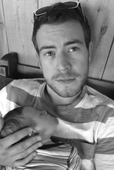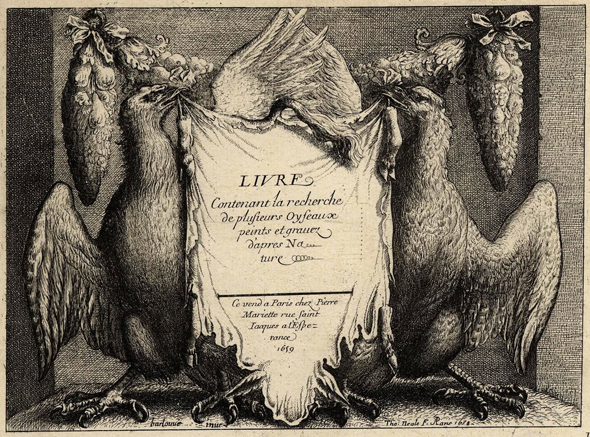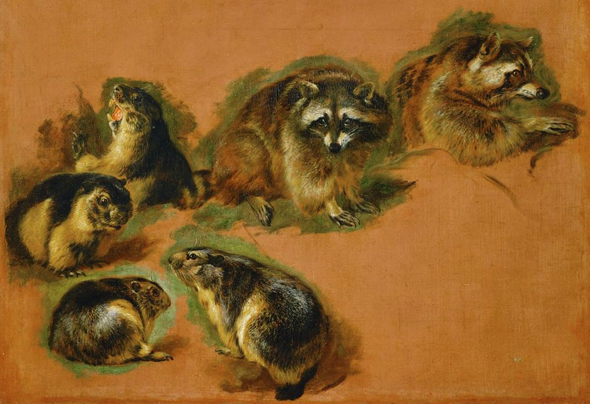
Nathan Flis
Postdoctoral Fellow (SSHRC)
| Degrees: | B.A. & Sc. (McMaster), M.A. (McGill), M.St., D.Phil (Oxford) |
| Phone: | 613-520-2600 x 5046 |
| Email: | nathan_flis@carleton.ca |
| Office: | 477 St. Patrick's Building |
I’m a specialist in European painting, drawing, and printmaking during the long seventeenth century (roughly c.1580-1720), with a primary focus on pictures of nature. I have also trained in the history of science and medicine.
My doctoral thesis focused on the life and work of the English painter and etcher, Francis Barlow (c.1626-1704), who produced large decorative paintings of birds and animals for country houses, a famous illustrated edition of Aesop’s Fables (1666), and whose pattern book prints of creatures were widely used by painters and illustrators throughout Europe during his lifetime. Barlow was also a political satirist for the Whig cause during the first age of party, adding a colourful dimension to his life, and enabling the interpretation of his works in the context of the social-political culture of Restoration London. While at Carleton, I’m revising my thesis with the aim of publishing a monograph on Barlow and the theatricality or spectacle of his pictures of birds and beasts. I make the case that the majority of Barlow’s decorative paintings with natural history themes can be interpreted as political allegories, in which creatures are employed as the actors in natural history dramas, or ‘natural histories’.
At the same time, I’m embarking on a tangentially related project, supervised by Stéphane Roy, which focuses on a group of painters and printmakers who studied the creatures in Louis XIV’s menagerie at Versailles (including Nicolas Robert, Pieter Boel, and Albert Flamen). In particular, I’m interested in the rise in Europe, from about 1650, of pictures of living creatures set in naturalistic, perspectival landscapes –in short, the first pictures of creatures in their natural habitats (be they imagined or observed from the life). I’m exploring this novel way of picturing nature (as well as the picturing of novel, exotic species which were brought to the Versailles menagerie) in the context of the expansion of trade in the French and English colonies during the late seventeenth and early eighteenth centuries, and so I hope to connect my work to the history of Canada and its creatures. On the theoretical side of things, I’m interested in modes of perception as they relate to the visualization and understanding of the natural world during the early modern period: what can different ways of picturing the landscape, birds, animals, and other creatures, tell us about our historical relationship with nature, and about the way we see and understand ourselves?
Finally, I have also published in the history of medicine, on the image and idea of the Victorian lunatic asylum and the display of asylum artifacts in ‘museums of madness’; on asylum commemoration; and the representation of the brain.
Selected Publications
“From Hollar in Antwerp to Barlow in London: birds and other creatures from the life”, in Anne Thackray and Andrea Bubenik, eds., New Perspectives on the Art of Wenceslaus Hollar, forthcoming with Ashgate
“Drawing, Etching, and Experiment in Christopher Wren’s Figure of the Brain,” Interdisciplinary Science Reviews, 37 (2) (June 2012): 145-60
“The Drawings of Francis Barlow: from Apprenticeship to Aesop’s Fables, 1648-66,” Master Drawings, 49 (4) (Winter 2011): 479-532
Francis Barlow: Painter of Birds & Beasts (London: Robert Boyle Project, 2011), exhibition catalogue, foreword by Michael Hunter
With David Wright, “A Grave Injustice: the Mental Hospital and Shifting Sites of Memory,” Chapter 7 in Catharine Coleborne and Dolly MacKinnon, eds., Exhibiting Madness in Museums: Remembering Psychiatry through Collections and Display (New York and Oxford: Routledge, 2011)
“Images of the Toronto Provincial Asylum, 1846-1890,” Scientia Canadensis, 32 (1) (2009): 21-50
With Martin Kemp, “Mapping the Cerebral Globe: A detailed sketch by architect Christopher Wren reveals his surprising contribution to neuroscience,” Nature, 455 (7219) (13 November 2008): 174
======================================================================
Selected Images
Me, in front of Francis Barlow and Willem Wissing’s Master Montagu Drake with his Pony and an Attendant, c.1685-90, oil on canvas, 158.8 x 236.2 cm, Tyrwhitt-Drake collection
Thomas Neale after Francis Barlow, title to a copybook of birds, Livre de…plusieurs oyseaux, 1659, etching, 15 x 17.7 cm, British Museum
Pieter Boel, Marmots and Raccoons, c.1669-71, oil study, 88 x 120 cm, Louvre (photo, Erich Lessing/Art Resource, N.Y.)


